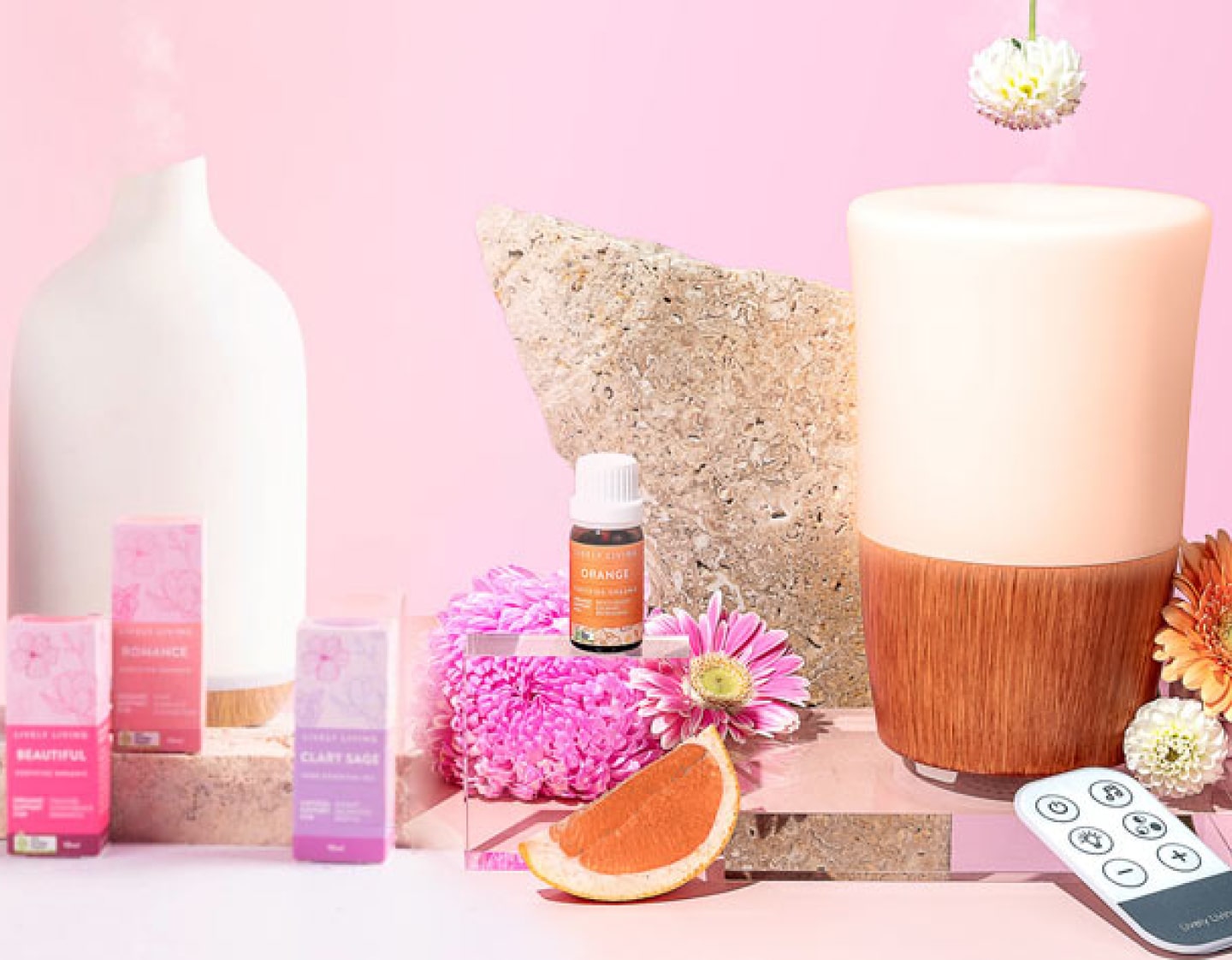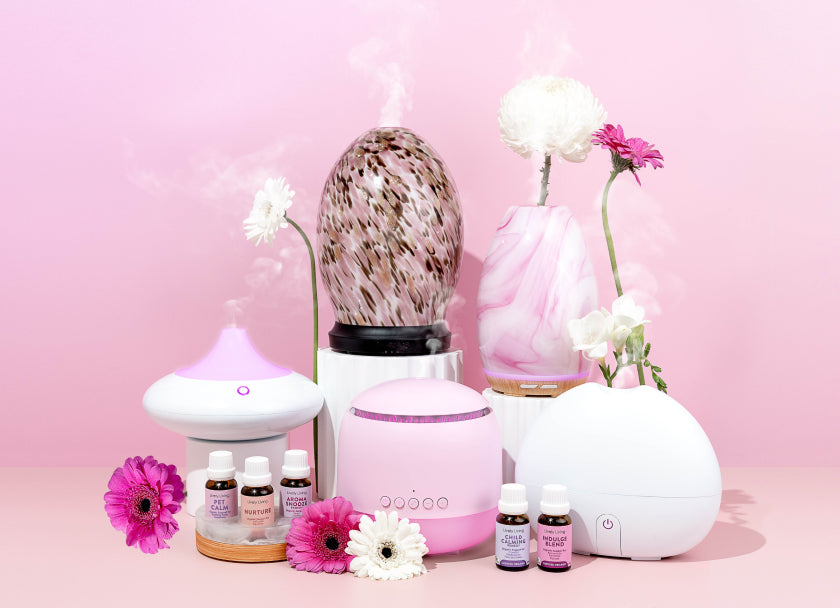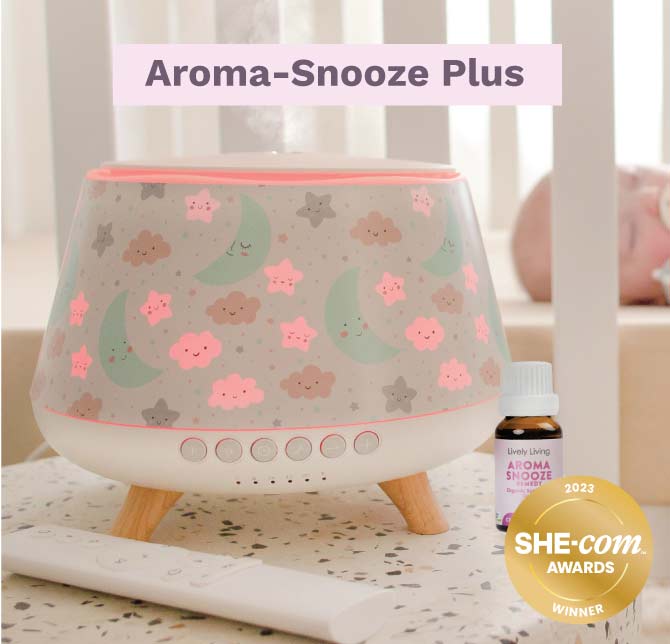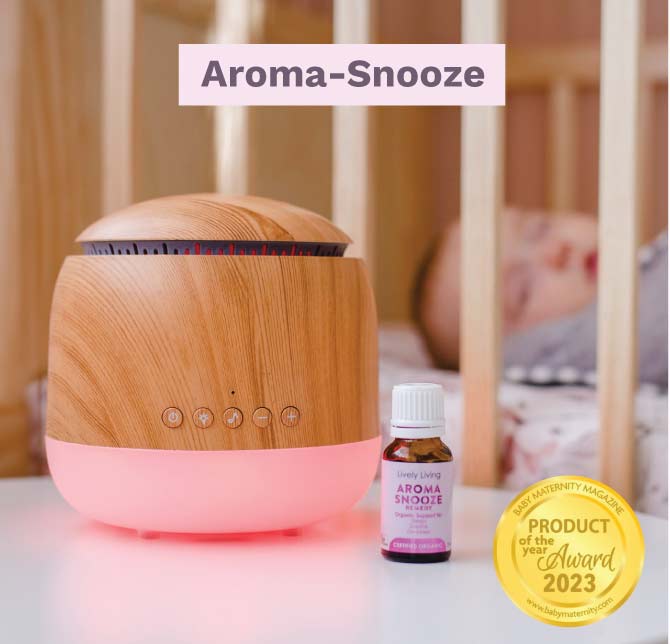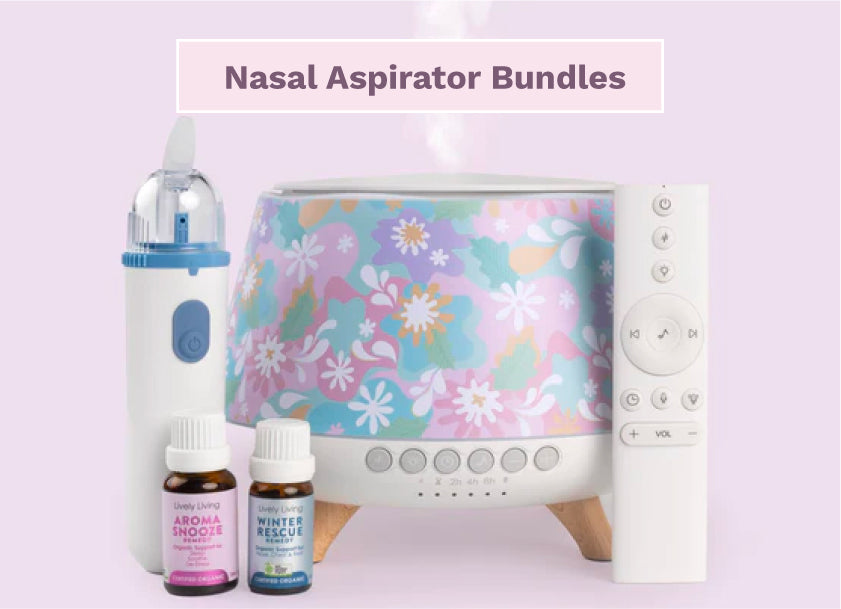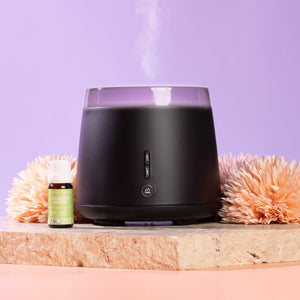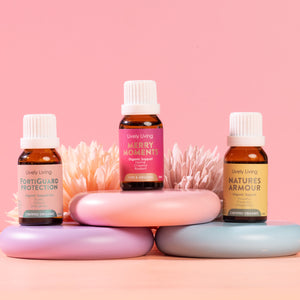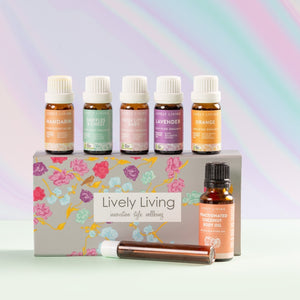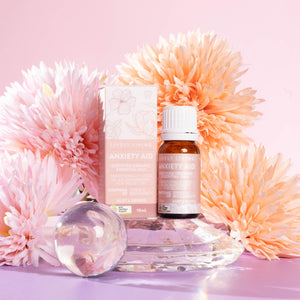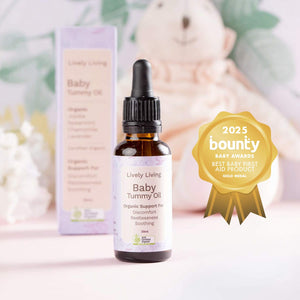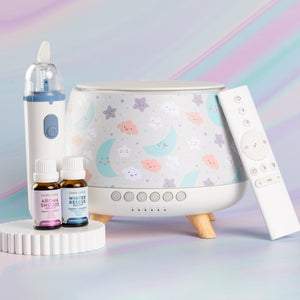How to Maintain Optimal Air Quality for Respiratory Comfort
We all desire to breathe easily and comfortably within our own homes; it seems straightforward. Yet, the indoor air can often contribute to feelings of stuffiness or general discomfort. Many individuals are unaware of the significant impact their indoor environment has on their breathing and overall respiratory health. Improving your home's atmosphere is achievable, beginning with a focus on Maintaining Optimal Air Quality for Respiratory Comfort. Prioritizing this aspect is a crucial move towards a healthier living environment and better well-being, making a noticeable difference in daily life.
Table of Contents:
- Why Does Indoor Air Quality Even Matter for Breathing?
- Understanding Common Indoor Air Pollutants
- Spotting the Sneaky Signs of Poor Air Quality
- Simple Steps for Better Air: Your Action Plan
- Thinking About Air Purifiers for an Extra Boost?
- Could Essential Oils Help with Respiratory Comfort?
- Making Maintaining Optimal Air Quality for Respiratory Comfort a Habit
- Conclusion
Why Does Indoor Air Quality Even Matter for Breathing?
Consider the amount of time you spend indoors. For most individuals, this constitutes a significant portion of the day. Australians, on average, spend approximately 90 percent of their time indoors, where they are exposed to various airborne particles and gases.
During this extensive indoor time, we continually breathe in whatever substances are present in the air. This includes common culprits like dust, pollen that infiltrates from the outdoor air, and pet dander from household animals. However, there are also less apparent indoor air pollutants, such as volatile organic compounds (VOCs), which can seriously affect your indoor air quality.
VOCs are gases emitted from a wide range of common household products and building materials. These potential sources include paints, cleaning agents, new furniture, air fresheners, and even some construction materials. Additionally, mould, thriving in damp environments, releases spores that contribute to indoor air pollution. These microscopic particles and harmful gases can irritate the respiratory system, leading to symptoms like a stuffy nose, scratchy throat, or increased coughing. The term 'describes air' often refers to the composition of these elements within your living space. These health risks are not to be taken lightly as they can damage lung tissue over time.
For individuals with asthma, allergies, or other pre-existing conditions affecting their respiratory health, poor indoor air quality can exacerbate their symptoms, leading to more frequent or severe flare-ups. The American Lung Association highlights how indoor air pollutants can cause various health problems and worsen respiratory conditions. Therefore, the quality of the air you breathe at home profoundly impacts your comfort and health, influencing everything from minor irritations to more significant health issues.

![]()
Understanding Common Indoor Air Pollutants
To effectively improve indoor air quality, it helps to understand the common types of pollutants that can affect your respiratory comfort. These indoor airborne pollutants come from a wide range of sources, some obvious and others less so. Recognizing these potential sources is the first step toward mitigating their health impact.
Biological pollutants are a major category. This group includes mold spores, which flourish in areas with high humidity levels, dust mites that feed on dead skin cells, pet dander from cats, dogs, and other animals, and pollen that drifts in from outdoors. These can trigger allergic reactions and asthma attacks in sensitive individuals, posing a health risk.
Chemical pollutants present another significant concern. Volatile organic compounds (VOCs) are emitted as gases from certain solids or liquids, including paints, lacquers, cleaning supplies, pesticides, office equipment such as copiers and printers, correction fluids, glues, and even new carpets and furnishings. Building materials and construction materials can also off-gas VOCs for extended periods. Formaldehyde, a common VOC found in pressed wood products and adhesives, is a known irritant and can cause health effects. Even common household products like air fresheners can release organic compounds that contribute to indoor air pollution.
Combustion pollutants are generated by burning materials. Carbon monoxide (CO) is an odorless, colorless gas that can be fatal; sources include unvented kerosene and gas space heaters, leaking chimneys and furnaces, gas stoves, and tobacco smoke. Particulate matter (PM) consists of fine particles that can be inhaled deep into the lungs, originating from activities like cooking, burning candles, smoking, and fireplaces. Tobacco smoke itself is a complex mixture of gases and particulate matter, containing numerous harmful chemicals. Avoiding smoking indoors is crucial for maintaining healthier air.
Other pollutants of concern include asbestos fibres, which can be released from deteriorating older building materials, and lead particles from old paint. These require professional assessment and removal. Each of these pollutants can contribute to poor indoor air and various health problems if not managed correctly.
| Pollutant Type | Examples | Common Sources | Potential Health Effects |
|---|---|---|---|
| Biological | Mold, Dust Mites, Pet Dander, Pollen | Damp areas, bedding, pets, outdoor air | Allergies, asthma triggers, respiratory infections |
| Chemical (VOCs) | Formaldehyde, Benzene, Toluene | Paints, cleaning products, new furniture, building materials, air fresheners | Eye/nose/throat irritation, headaches, nausea, long-term organ damage |
| Combustion | Carbon Monoxide, Particulate Matter, Nitrogen Dioxide | Gas appliances, fireplaces, smoking, cooking | Headaches, dizziness, respiratory irritation, cardiovascular disease, CO poisoning |
| Other Particulates | Asbestos Fibres, Lead Dust | Old insulation, deteriorating paint in older homes | Lung cancer (asbestos), developmental problems in children (lead) |
Spotting the Sneaky Signs of Poor Air Quality
Sometimes, the indications of poor indoor air quality are not immediately obvious, extending beyond a simple cough or sneeze. You might observe other, more subtle clues that initially seem unrelated. A persistent, mild cough that doesn't resolve or a constant need to clear your throat can be signals.
Experiencing frequent headaches or feeling unusually fatigued while at home could also point to issues with your indoor air. If these symptoms tend to lessen or disappear when you are away from the house, your indoor environment may be the underlying cause. For individuals with known allergies, asthma, or other respiratory conditions, an increase in symptoms while indoors is a significant warning. Pay close attention if you find yourself reaching for your inhaler more often at home or if pre-existing conditions seem to worsen without a clear external trigger.
Unexplained, musty odors that you cannot pinpoint often indicate the presence of mold or mildew, even if it's not visible. Speaking of visibility, observing mold growth is a definitive sign of an air quality problem. An unusually rapid accumulation of dust shortly after cleaning is another indicator. An air quality monitor can provide objective data about particulate matter, VOCs, and humidity levels, helping you understand the health effects of your indoor environment. These are all communications from your body and home, suggesting that your indoor air quality needs attention to prevent further health issues, including potential impacts on cardiovascular disease from certain airborne pollutants.

![]()
Simple Steps for Better Air: Your Action Plan
Improving your indoor air often does not require extensive or costly modifications. Frequently, straightforward and consistent actions can yield a substantial improvement in your living environment. You possess more control over your indoor air than you might imagine, making it possible to achieve healthier air.
Let the Fresh Air In: The Power of Ventilation
One of the most effective methods to improve indoor air quality is through proper ventilation with fresh air. Good ventilation helps to dilute or remove indoor airborne pollutants by introducing cleaner fresh outdoor air and expelling stale, polluted indoor air. Consider opening your windows regularly; even 10-15 minutes of fresh outdoor air coming into your home daily can make a difference, regardless of the season.
Utilize exhaust fans in your kitchen and bathrooms effectively. When cooking, the kitchen exhaust fan helps remove smoke, grease particles, and cooking odors, improving the air flow. In the bathroom, it aids in eliminating steam and moisture that can foster mold growth. If your windows are equipped with trickle vents, ensure they are open and functioning correctly, as these small openings facilitate a continuous, minimal exchange of air, crucial for reducing indoor air pollution.
For homes that are tightly sealed for energy efficiency, a mechanical ventilation system, possibly with heat recovery (a heat recovery ventilator or HRV), can be beneficial. These systems bring in fresh outdoor air while recovering heat from the outgoing stale air, thus maintaining energy efficiency. Adequate ventilation is key to preventing the buildup of indoor air pollutants, including carbon dioxide, which can accumulate with inadequate ventilation.
Clean Smarter, Not Harder, for Purer Air
Consistent cleaning is fundamental for minimizing dust and allergens, common components of poor indoor air. Dust surfaces frequently with a damp cloth to trap dust particles instead of dispersing them into the air. Vacuuming floors, carpets, and upholstery at least once or twice a week significantly helps; using a vacuum cleaner equipped with a HEPA filter is advantageous as these filters excel at capturing tiny particulate matter, including dust mites and pet dander.
Do not overlook your bedding; wash sheets, pillowcases, and blankets in hot water weekly to control dust mites, a prevalent allergen. Mopping hard floors after sweeping or vacuuming collects any remaining dust. When selecting cleaning products, look for those with low VOC content or consider natural alternatives like vinegar and baking soda for certain tasks to reduce the introduction of harmful cleaning agents into your indoor environment.
The Green Team: Plants That Help Clean Your Air
You may have heard that certain houseplants can contribute to purifying indoor air. While they are not a comprehensive solution, some plants are more effective than others at filtering out common toxins and can improve the general indoor environment. Spider plants are a popular, low-maintenance choice. Snake plants are robust and can thrive in low-light conditions. Peace lilies are also beneficial and feature attractive white blooms.
NASA conducted research years ago exploring the air-purifying capabilities of plants. However, it's important to recognize that a very large number of plants would be needed to equal the air-cleaning capacity of a mechanical air purifier. Nevertheless, plants introduce a natural element to your home, can enhance thermal comfort subtly, and potentially elevate your mood, making your living space feel more vibrant. Proper care is essential to prevent issues like mold in the soil, which could negatively impact air quality.
Managing Moisture: Keep Mould at Bay
Controlling indoor moisture is critically important for maintaining good air quality and respiratory health. Excess moisture promotes the growth of mold and the proliferation of dust mites, both of which can release harmful substances into the air. Mold spores can trigger allergies and other respiratory issues. The initial step is to promptly repair any leaks, checking under sinks, around windows, and in basements or attics for signs of water damage or problematic humidity levels.
Employ dehumidifiers in naturally damp areas such as basements, crawl spaces, or bathrooms to maintain an optimal humidity level. Health experts generally recommend keeping indoor humidity between 30% and 50%. Good air flow throughout your home, particularly in moisture-prone areas like bathrooms and kitchens, is vital to prevent condensation buildup. Effective moisture control is a significant factor in preventing mold growth and improving indoor air.
Thinking About Air Purifiers for an Extra Boost?
Even with diligent ventilation and cleaning, you might seek additional support to improve indoor air. This is where air purifiers can play a valuable role. An air purifier is a device designed to cleanse the air within a room, typically by drawing air through one or more filters that trap various airborne pollutants.
HEPA filters are frequently mentioned, and for valid reasons. HEPA, an acronym for High-Efficiency Particulate Air, signifies a filter capable of capturing 99.97% of airborne particles that are 0.3 microns in size. This includes common irritants such as dust, pollen, pet dander, and mold spores. How3ever these filters can be expensive to repalce and are still not as effective as the Safe Air Purifier technoloyg from Lively Living.
Many air purifiers also incorporate activated carbon filters, which are effective at adsorbing odors, gases, and volatile organic compounds (VOCs), helping to remove pollutants from the air.
An air purifier could be a particularly beneficial addition if a household member suffers from significant allergies, asthma, or other respiratory conditions. They are also helpful in areas with high outdoor air pollution or for homes with pets. When selecting an air purifier, consider the size of the room; look for the Clean Air Delivery Rate (CADR), which indicates how quickly the purifier can clean the air in a room of a specific size. Also, remember to account for the ongoing cost and frequency of filter replacements to maintain its effectiveness in providing healthier air.
Could Essential Oils Help with Respiratory Comfort?
Many individuals find that essential oils offer a pleasant way to enhance their indoor environment. Some oils are traditionally known for their refreshing and clearing aromas. When diffused, they can make the air feel cleaner and more invigorating. Think about scents like Eucalyptus. It's often used for its strong, camphoraceous aroma that can make breathing feel easier. Peppermint is another popular choice, known for its sharp, minty scent that can be very uplifting.
Lavender, with its calming floral notes, can promote a relaxing atmosphere. This can be helpful if stress contributes to your breathing discomfort. Tea Tree oil, with its fresh, medicinal scent, is also valued. Diffusing these oils can spread their aroma throughout a room. It can be a lovely addition to your efforts for better air quality.
But, it's important to use essential oils carefully. Always choose high-quality, pure essential oils. Make sure your diffuser is suitable for the oils you pick. Don't overdo it; a little often goes a long way. Good ventilation is still important, even when diffusing. Some people, and especially pets, can be sensitive to essential oils. Small children and pregnant women also need special consideration. It is best to check with a healthcare professional or a qualified aromatherapist if you have concerns. Introduce new oils slowly and in small amounts to see how you react. Think of essential oils as a complementary touch to your overall air quality plan, not the main fix for serious indoor air pollution problems. Diffusing can be a really enjoyable part of creating a pleasant and fresh-feeling home. Always dilute essential oils properly before any topical use, and remember some oils are not safe for pets, like cats and dogs, as mentioned by the ASPCA. When used thoughtfully, they can certainly add to your respiratory comfort.
Making Maintaining Optimal Air Quality for Respiratory Comfort a Habit
The genuine approach to easier breathing at home is not a singular fix but involves cultivating healthy habits. Consistency is paramount in Maintaining Optimal Air Quality for Respiratory Comfort. Consider it analogous to other aspects of a healthy lifestyle where small, regular actions accumulate positive effects over time, contributing to a healthier living environment.
Try to integrate these air-quality-enhancing tasks into your daily or weekly routine. For instance, you might air out the house each morning while preparing coffee, or designate Sunday for deep cleaning and washing bedding. The more frequently you perform these actions, the more ingrained and natural they become. Also, practice source control by being mindful of what you bring into your home. New furniture, for example, can release VOCs through a process known as off-gassing; if feasible, allow new items to air out in a garage or well-ventilated space before introducing them into your primary living areas. Pay attention to labels on cleaning products and construction materials, opting for lower-VOC options whenever possible to reduce potential sources of indoor air pollution.
Crucially, listen to your body and observe how you feel in different parts of your home. If you consistently feel better when away from home, it is a strong indication to investigate your indoor environment further. Avoiding smoking indoors is vital, as tobacco smoke releases a wide range of harmful pollutants. Awareness of carbon dioxide levels, which can rise due to inadequate ventilation, is also important as high CO2 can lead to lethargy and poor concentration. Making these small changes and maintaining awareness can lead to significant improvements in your daily comfort and overall respiratory health.
Conclusion
Breathing clean, fresh air in your home is not merely a pleasant notion; it is an attainable goal you can actively pursue. By understanding the factors that affect your indoor air and the potential health impact, you can implement practical measures to improve it. From simple habits like regular cleaning and proper ventilation to considering the use of an air purifier or thoughtfully incorporating essential oils, numerous options are available to enhance your indoor environment.
Focusing on Maintaining Optimal Air Quality for Respiratory Comfort can significantly elevate your day-to-day well-being and reduce health risks associated with poor indoor air. Your home should be a sanctuary where you feel your absolute best, and cultivating healthier air is a fundamental component of achieving that. These efforts contribute to a much healthier living experience for everyone in the household.
Lively Living is Australias leading supplier of diffusers , air purifiers and organic oils
Yours in good health
Julie and the Lively Living team

